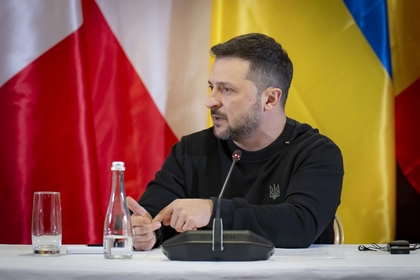Key Takeaways from the ISW:
- Ukraine's operation in Kursk Oblast has allowed Ukrainian forces to at least temporarily seize the battlefield initiative in one area of the frontline and contest Russia's theater-wide initiative.
- The Ukrainian operation in Kursk Oblast and further possible Ukrainian cross-border incursions force a decision point on the Kremlin and the Russian military command about whether to view the thousand-kilometer-long international border with northeastern Ukraine as a legitimate frontline that Russia must defend instead of a dormant area of the theater as they have treated it since Fall 2022. Moscow’s response may require the Russian military command to consider the manpower and materiel requirements for defending the international border as part of its theater-wide campaign design and can therefore impose long-term operational planning constraints that Russia previously did not face.
- Geolocated footage and Russian and Ukrainian reporting from August 10 and 11 indicate that Ukrainian forces advanced westward and northwestward in Kursk Oblast, although Russian sources largely claimed that Russian forces have stabilized the situation.
- The hastily assembled and disparate Russian force grouping responding to the Ukrainian incursion into Kursk Oblast is comprised of Russian units likely below their doctrinal end-strength and ill-prepared to establish the joint command and control (C2) structures necessary to coordinate operations.
- Russia’s redeployment of battalion and lower-level units rather than full brigades and regiments to defend in Kursk Oblast is likely contributing to Russian forces' difficulty in quickly establishing effective C2 in the area.
- Confusion about the status of Russian conscripts fighting in Kursk Oblast is a consequence of ineffective C2 and will likely continues to further strain Russia’ C2 structures to respond to the Kursk operation.
- Russian officials acknowledged that Ukrainian mobile groups advanced upwards of 25 kilometers into Belovsky Raion, Kursk Oblast on the night of August 10 to 11, but there are no indications that these groups remain in the area or that Ukrainian forces are operating beyond the immediate border area in Belovsky Raion.
- The reported rapid Ukrainian maneuver in Belovsky Raion suggests that Russian forces along the international border remain poorly prepared to respond to further Ukrainian cross-border incursions.
- Russian sources claimed on August 11 that small Ukrainian groups attempted unsuccessful limited cross-border incursions into western Belgorod Oblast.
- Ukrainian President Volodymyr Zelensky officially acknowledged the Ukrainian cross-border incursion into Kursk Oblast for the first time on August 10.
- A top Ukrainian defense official reportedly stated that Russian forces have somewhat reduced the intensity of assaults in eastern Ukraine but that otherwise the situation remains largely unchanged amid the Ukrainian operation in Kursk Oblast, which is consistent with ISW's observations of Russian offensive tempo across the theater.
- Russian forces recently advanced near Kupyansk and Donetsk City.
- Russian propagandists are attempting to use the Ukrainian incursion into Kursk Oblast to promote Russian force generation efforts.
JOIN US ON TELEGRAM
Follow our coverage of the war on the @Kyivpost_official.
Authors: Christina Harward, Angelica Evans, Grace Mappes, Kateryna Stepanenko, Davit Gasparyan, and George Barros.
See the original here.
To suggest a correction or clarification, write to us here
You can also highlight the text and press Ctrl + Enter
You can also highlight the text and press Ctrl + Enter








